A Moment in a Cooper's Hawk Life
And not a "circle of life" moment this time
I was walking in a local park when I heard the sound of a Cooper's Hawk. Listen to this Birdnote piece to hear the telltale sound of a Cooper's Hawk and to learn about this special, now urbanized bird. I followed the sound and was able to spot the bird tucked deeply among the thick trees.
The brown plumage tells us this is an immature bird, likely hatched last summer. Its feathers are brown. As it matures into adulthood, beginning around the age of two, the brown feathers will turn gray and the plumage pattern on its breast will also change.
The Cooper's Hawk was definitely watching me, even though I felt that I was at a reasonable distance. The bird turned and crouched down.
Warily maintaining eye contact, the Cooper's Hawk took off.
The Cooper's Hawk began looking to the side once it was clearly airborne. The thick banding is visible across the bird's tail in the photos above, and the underside of the tail is clearly patterned the same from below in the following photo. The upper side of the tail is colored in gray and brown bands, but underneath, the tail is banded in white and brown.
Although obscured by numerous twigs, you can see how the Cooper's Hawk readily navigates among the web of tree branches and twigs. You can also see that the end of the Cooper's tail is rounded, with the outer tail feathers a bit shorter than the middle tail feathers.
The Cooper's Hawk found a new perch, perhaps 20 feet from the perch where I first found it. Again, the raptor clearly is aware of my presence. It did not appear to be showing any behaviors that made me think it was anxious.
Without approaching the bird and by using my telephoto lens, I was able to take a clear portrait shot. Juvenile Cooper's Hawks have yellow irises. In the next few years, as the bird matures, the iris will change to an orange color and then to a dark red. The breast feathers, now sporting what I call "chocolate raindrops", will also change as this bird matures. As an adult it will have soft orange barring horizontally across its breast.
The Birdnote piece spoke to the presence of Cooper's Hawks in urban areas. In Tucson, the Annual Christmas Bird Count usually reveals that Tucson has one of the highest incidence of Cooper's Hawks among all cities across the United States.
Cooper's Hawks are proficient hunters whose prey most often is other birds. With short wings suitable for bursts of speed with rapid wing beats and a long tail used like a rudder, Cooper's Hawks can navigate through vegetation easily in pursuit of prey. Most people in Tucson with bird feeders in their yards can attest to the hunting skills of Cooper's Hawks. Birdnote adds more background to the Cooper's incredible hunting prowess at this link


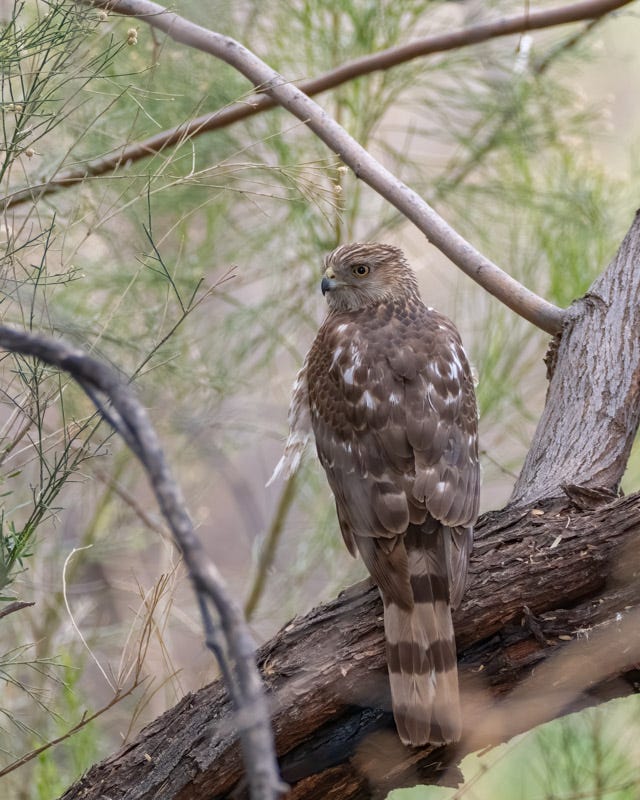
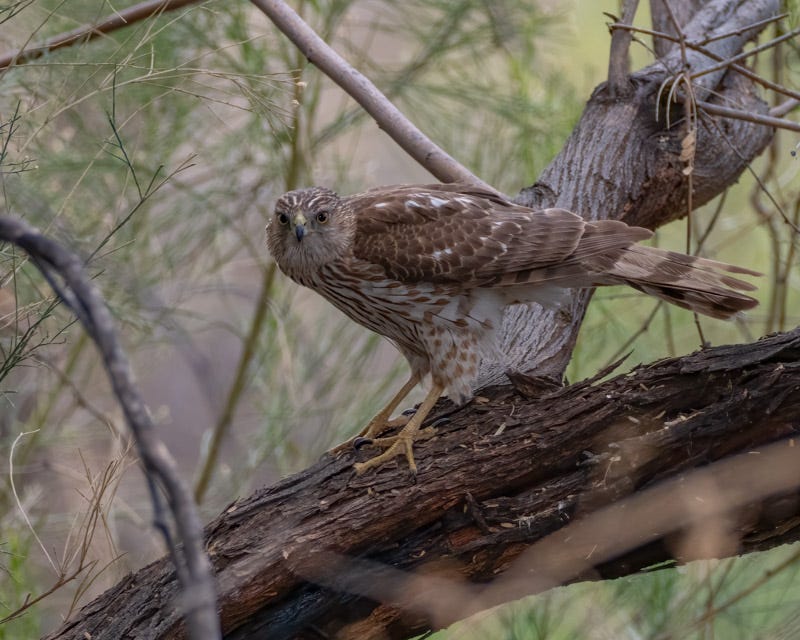
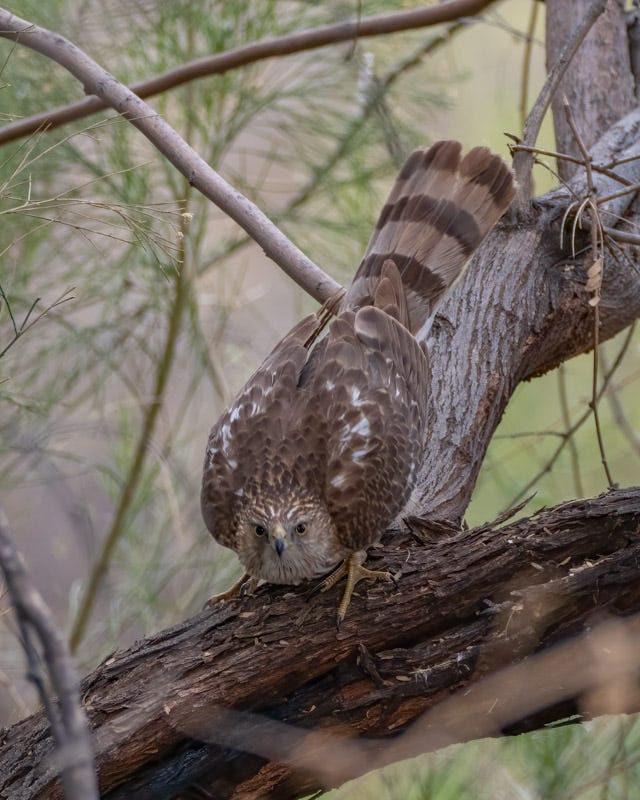
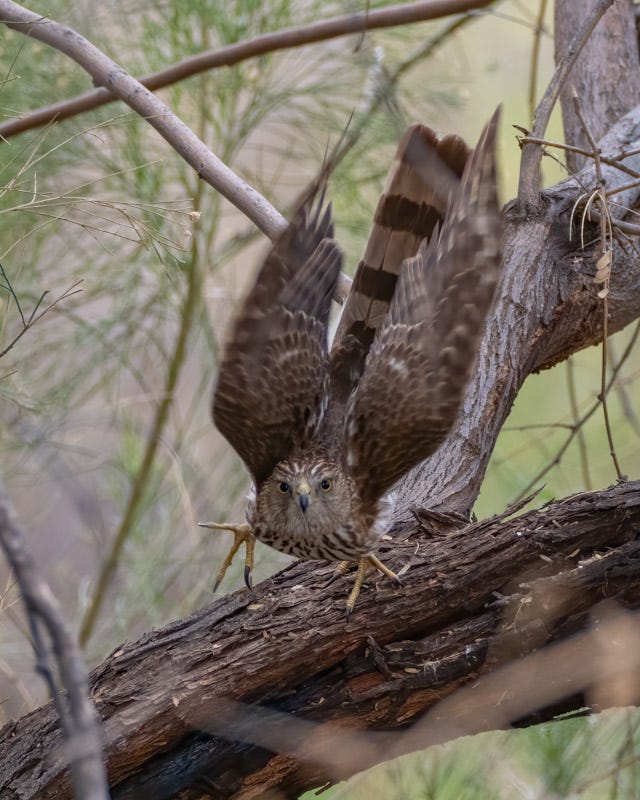
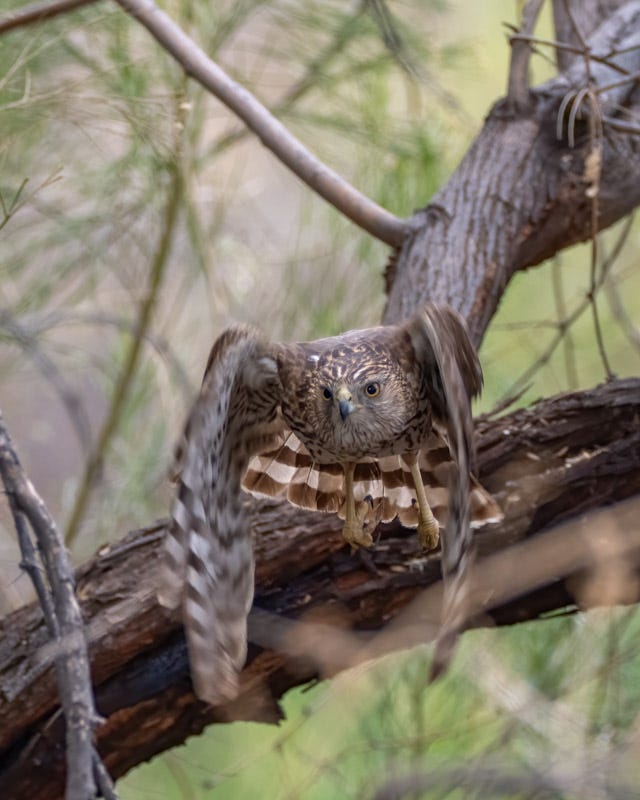
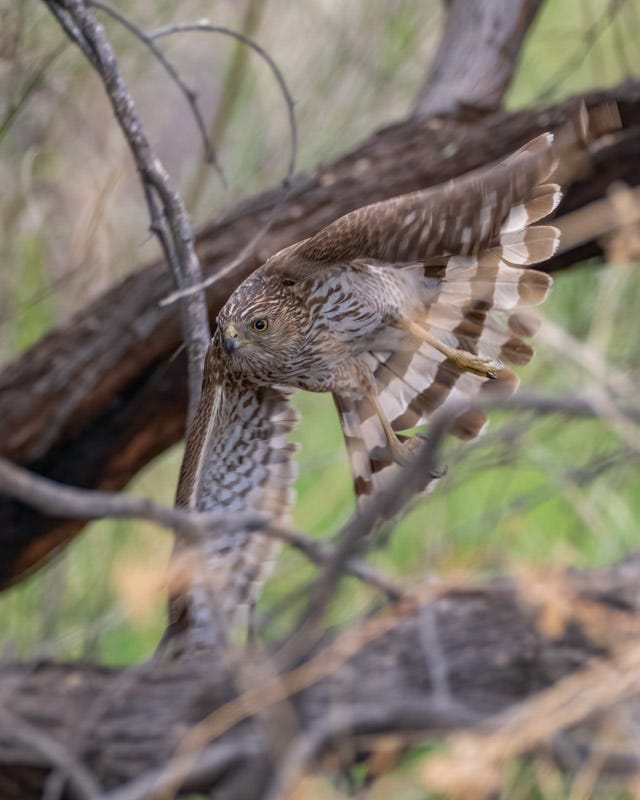
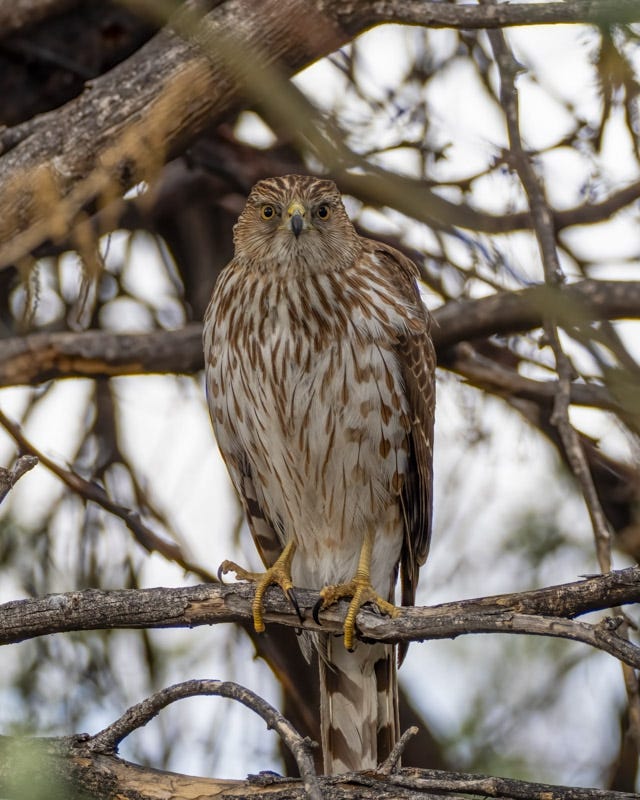
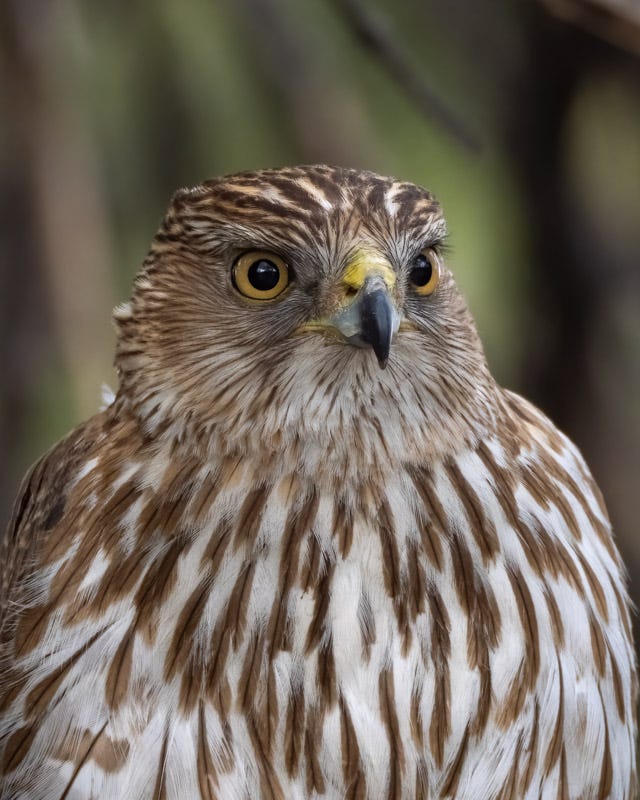
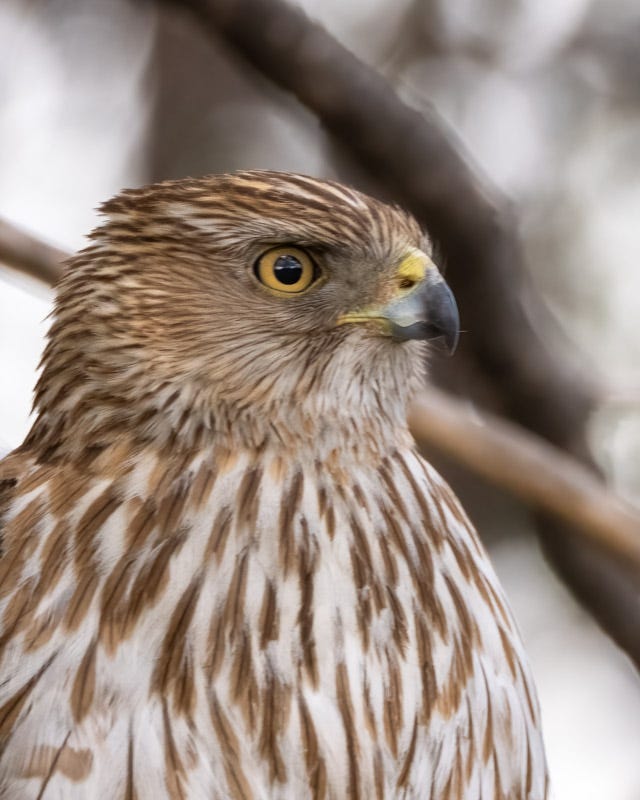
Very fine photos and description. Loved the chocolate raindrop, will remember that. The juveniles are more beautiful to me than the adults. FYI, I have seen a Cooper’s Hawk carry away a whole grey squirrel it strangled in my backyard in suburban Chicago. The strangling and drowning of their prey is pretty unique to the Cooper. The squirrel must weigh more than the hawk, but it managed liftoff to avoid an overzealous photographer (me). Couldn’t believe it could carry the weight and length dangling behind.
Love the closeup of the face photo. Interesting commentary